3 Ways East Africa is Paving the Way for A New Generation of Energy


In East Africa, where energy infrastructure is lacking, a decentralized network of energy has taken its place: a micro-revolution of practical solutions that start with the individual.
For half the planet, access to energy remains elusive, unreliable and expensive. In East Africa, where traditional structures fail or are slow to form, a decentralized network of energy has taken its place: a micro-revolution of practical solutions that start with the individual. In BioLite's new film series, Connecting the Watts, we unpack this micro-revolution of energy and its broader impact on the global economy, climate and more—and we break down three ways in which this region is shaping the future of energy.
1. The grid is moving from the ground to the sky
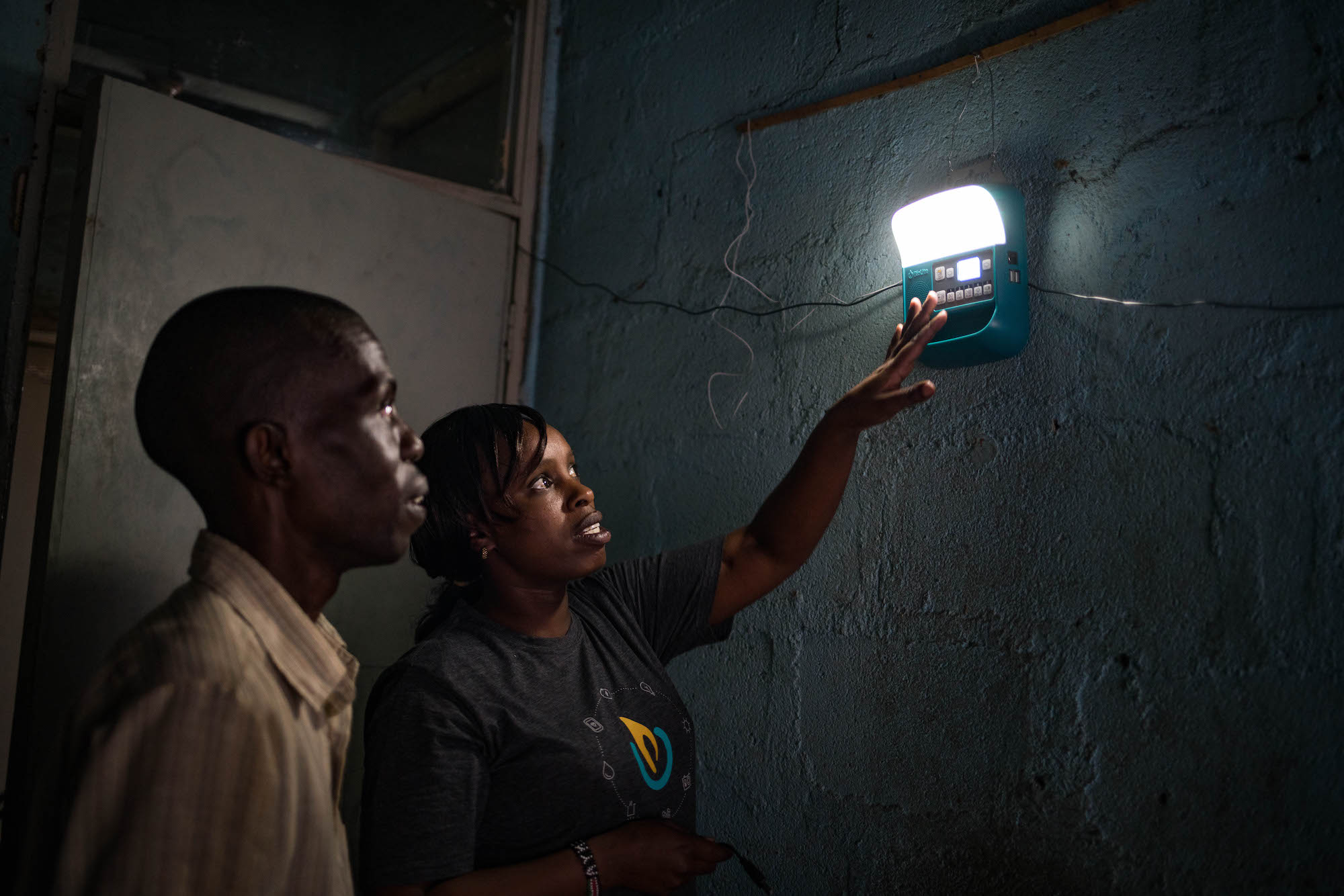
Average rates of electrification are below 30 percent in East Africa. While traditional grid infrastructure and large-scale solar projects are working their way toward these un-electrified communities, there’s one big problem—it’s taking a really long time. It could be decades before the majority of these communities get reliable energy access. Rather than waiting around, individuals are turning to alternative solutions and empowering themselves in the form of personal-scale solar microgrids.
These microgrids, like the BioLite SolarHome 620, are roughly the size of a shoebox and include everything needed to install the system in a home, including solar panels, lights, a control hub and a radio. They are affordable, simple to set up, and start powering households right away. Access to those first few watts has a profound impact: According to Acumen, children living in homes with solar lighting study an hour longer each day, and 74 percent of people surveyed say that reliable energy access has transformed their lives.
Just as the rise of mobile phone ownership virtually replaced landlines, we’re seeing that the popularity of decentralized social grids has the potential to outpace reliance on traditional grid structures. In this film, we spoke with a few solar experts who share why the traditional grid isn’t moving fast enough and hear why the sky is the grid of the future. You’ll also meet a farmer and part-time tailor who’s finding safety from the sun with her new microgrid.
2. Mobile phones give the unbanked access to cashless transactions

Think Venmo is sophisticated? We're late to the party—East Africa has been trading digital currency for years. When cell phone ownership took off in East Africa, people began trading talk-time in exchange for goods and services, widely known as mobile money. This has evolved into a thriving economy where the most rural households are now able to participate in a broader market of exchange. The rise in popularity of mobile money is creating an energy paradox: 93 percent of adults in Kenya have mobile money, yet only 56 percent have access to electricity. These mobile phone owners need energy solutions that can keep up with their technology.
In this film, we explore how mobile money is enabling a new path for customers to make significant investments in products like a microgrid or cookstove. We’ll also introduce you to a restaurant owner who runs every aspect of his work with mobile money and see just how powerful digital currency can be.
3. Cleaner cooking solutions can curb local environmental degradation, and at scale, have potential to curb climate change

Three billion people around the world rely on smoky open fires to cook their meals. These cooking fires are not only harmful to their health, but also release a significant amount of carbon dioxide and produce a staggering 25 percent of global black carbon emissions (the second leading cause of climate change behind CO2). But different from CO2, black carbon can cycle out of the atmosphere in as little as two weeks. There is huge opportunity to reduce this pollutant—it starts by replacing smoky open cooking fires with more efficient cookstoves. By turning to cleaner cookstoves like the BioLite HomeStove, families in East Africa are reducing their fire’s toxic emissions by 90 percent and offsetting 3.5 tons of CO2 and black carbon a year.
While the world at large confronts global climate change, we looked to see how local communities are coping with their changing environments and found some inspiring results. Follow a team of traditional weather forecasters and Kenyan meteorologists as they work to educate and empower local farmers despite increasingly erratic weather patterns. In this new film, one thing becomes clear: Immediate change can happen right at home.
At BioLite, we’ve been working to bring affordable energy alternatives to these communities since 2013. After years operating in sub-Saharan Africa, it’s become clear that a decentralized network of energy is replacing traditional grid structures which often fail to meet the needs of last-mile customers. These are only three of the many ways individuals in East Africa are reimagining the future of energy. As we look toward developing new and innovative energy sources, gathering insight and inspiration from the local level can help us develop solutions that have a greater impact on people and the planet.
Images and videos courtesy of BioLite
Sustainability Director Reflects on Walmart's Hunger Relief Milestones


This article series is sponsored by Walmart and produced by the TriplePundit editorial team.
I recently traveled to upstate New York for a visit with the Food Bank of the Southern Tier. During my time there, I met four amazing women—all with different stories, but each of whom had seen dramatic changes in their lives centering on the moment when they started to eat healthy and nutritious food. I was moved as they shared their personal journeys and reminded again how important it is to keep people’s experiences, perspectives, and the needs of communities at the center of what we do.
Each and every day, Walmart and the Walmart Foundation work to help serve communities—it’s in our DNA. The company was formed to bring people access to the most important things they need to live their lives better—and what could be more important than access to food? We believe no family should have to choose between food that’s healthier for them and food they can afford. That’s why we believe it is important to be a part of the work being done by the Food Bank of the Southern Tier, and food banks, pantries, soup kitchens, and other hunger relief agencies that open their doors to their local communities each day. In addition, we support programs that provide nutrition education and cooking skill development to help families build confidence in choosing healthier foods.
And, as the world’s largest grocer, Walmart is relentless in our commitment to making healthier food more accessible to our customers.
We’ve accomplished some important milestones in this work. In 2015, Walmart and the Walmart Foundation committed to help provide 4 billion meals to people in need and provide nutrition education to 4 million people by 2020. We recently announced that we have put funding in place to reach both of these commitments ahead of schedule. While we are proud of our work, that milestone that is shared with hundreds of thousands of individuals: our associates who volunteer their time and talents, the organizations who serve communities on the front lines, suppliers who have helped to mobilize customers and communities, and other funders who have helped support organizations as they work to serve those in need. The commitment of each of these individuals taken together makes a significant difference.
As much as there is to be proud of, we also know that this is just a step taken in our journey toward everyone having access to healthier food. Inequity in access to healthier food persists—and the world looks different than it did five years ago, meaning we need innovation and creativity to find new solutions. For example, data analytics and machine learning are changing the way we work and offer promise for new ways to solve problems. Even the way families shop, cook and eat is changing—all of this innovation offers new opportunities to help support families who are most in need.
So, while we should celebrate what we have accomplished and learned, we’re not done yet. We will continue to lead with Walmart’s strengths, including donating food and engaging customers and associates, and continue to focus on the system itself, strengthening food recovery efforts, and providing support for extending the reach of hunger relief programs in new ways. But, we take seriously the challenge of how to evolve our work. Our vision for a sustainable food system is one that will require combining efforts to improve access and availability to healthier food with approaches to increase people’s confidence to select, prepare and serve healthier foods. It will also involve taking a look at where resources are most needed, and where they are distributed today.
That is not to say there are not needs in every community. In fact, check out Feeding America’s Map the Meal Gap to see how many people in your county are food insecure. Walmart and the Walmart Foundation are committed to continuing to invest in programs that impact communities at scale. However, we are also looking to prioritize reaching communities that experience higher rates of food insecurity and diet-related diseases, focusing on programs that are culturally and geographically relevant to support those communities.
We know there is a lot to learn in the next chapter of this work. But the invitation to think differently about how to achieve a more sustainable and accessible food system for all is one we are excited to accept.
Image credit: Sharon McCutcheon/Pexels
The Business Case for Pushing Bipartisan Climate Action in Congress
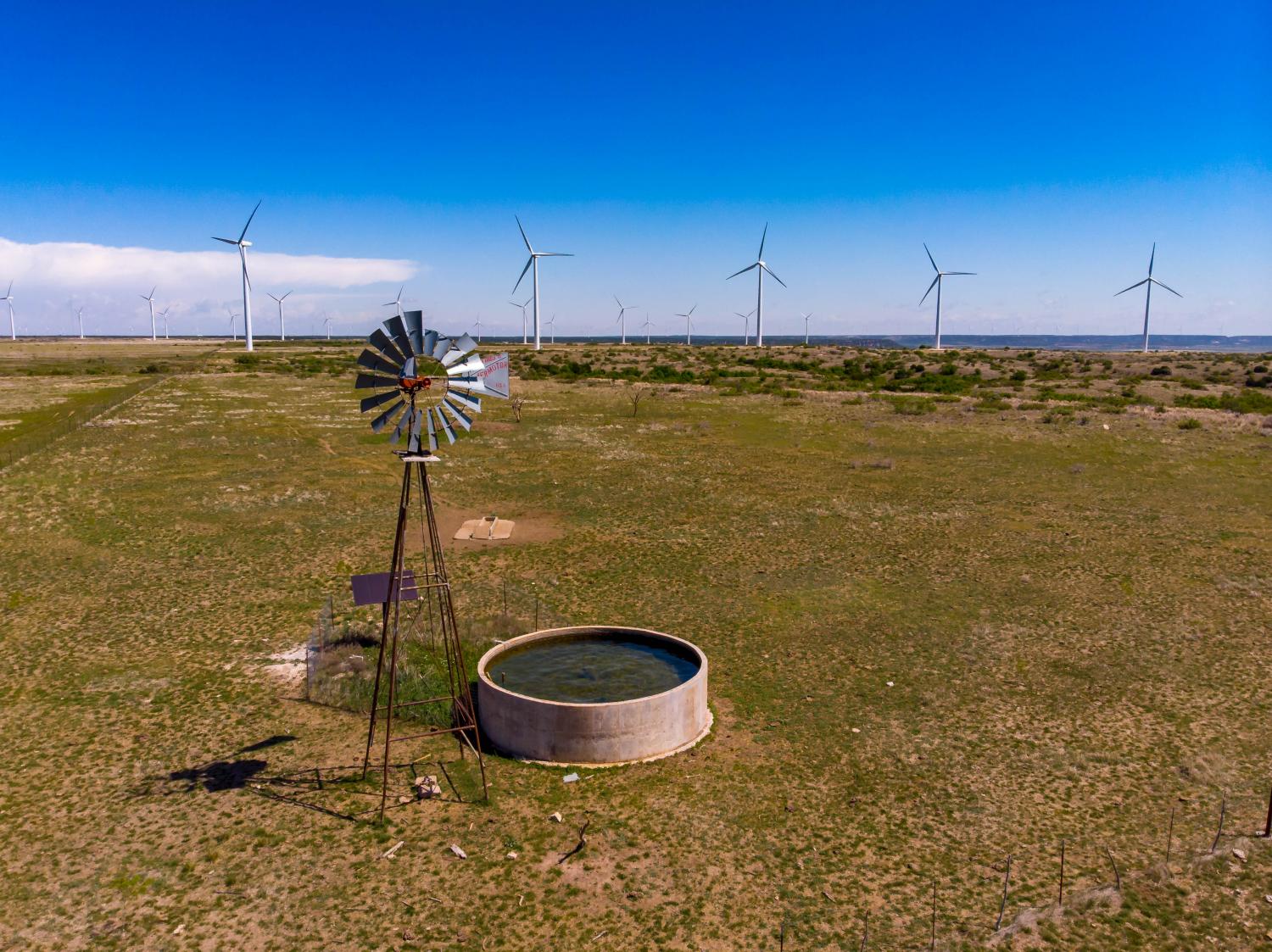

Could recent Senate hearings on climate change be the spark that pushes bipartisan action in Congress, which in turn could motivate more companies to take bolder steps as well?
As we discussed earlier this week, Republican Senator Lisa Murkowski of Alaska had convened an Energy and Natural Resources Committee hearing on climate change, the first time in six years a hearing focused on climate change had occurred in the Senate. Could it be the spark that pushes bipartisan action in Congress, which in turn could motivate more companies to take bolder steps on climate action?
Among the many topics Murkowski discussed about the impact climate change has had on Alaska during the hearing, she dropped one hint regarding the need for Congress to take action. It occurred midway through her statement, in the context of relocating communities at risk from encroaching seas:
“We have a number of communities that need to relocate in order to survive the encroaching seas, as we’re seeing more sea ice move out and more open water. But, our reality is that we don’t, at this point in time, have a clear or effective federal plan to ensure that can happen on a timely basis.”
That brings us to a caveat regarding last week’s hearing. Although it was an important step forward, it was a small one.
Senator Murkowski already has a reputation for articulating positions outside of the conventional Republican mold, so the climate change hearing was not exactly a sea change for her.
Similarly, the weight of the hearing was somewhat diluted by the ranking member on the Committee, West Virginia Democratic Senator Joe Manchin, whose stance on climate action tends to be on peacemaking with fossil fuel stakeholders and job holders in his home state.
A more definitive milestone by which to measure meaningful bipartisan agreement would finally occur when hardline Republican climate deniers like Oklahoma Senator Jim Inhofe and U.S. President Donald J. Trump finally begin to advocate for bold climate action.
What bipartisan action?
A recent article in Bloomberg painted a somewhat more optimistic picture on the pace of bipartisan movement, but points out the essential problem: Republicans in Congress are beginning to stop sowing doubt about climate change, but they have yet to act on any national policy to reduce greenhouse gas emissions.
Bloomberg does note, though, that additional hearings are on the way. That provides every American business with a Republican representative (or a waffling Democratic representative), to take a page from Senator Murkowski’s playbook and advocate for climate action in terms of real-time pocketbook and quality of life impacts. And business leaders can do their part by making the economic case for the deployment of cleaner sources of electricity and transport fuel.
For additional support, businesses can turn to the increase in bipartisan support for renewable energy, which rests almost entirely on the economic benefits of low cost, zero emission power.
Another avenue is the weight of public opinion. Despite criticism from the Republican side of the aisle (and from some Democrats), the elements of the proposed Green New Deal have received strong support in public opinion polls.
We can see the shift to renewables occur across the U.S., especially in the reddest of the “red” states. We’re witnessing a surge in clean energy investment in Texas; tea party activists in Georgia have worked with the Sierra Club to advance the cause of renewables in the Peach State; wind power has been keeping the lights on in much of North Dakota.
The Green New Deal as a segue to corporate responsibility
The tenets of the Green New Deal also coincide with the foundation of corporate social responsibility, especially regarding the transition to the low carbon economy.
Finally, global oil and gas giants are also lending the weight of their authority to the clean power transition. Shell, for example, has made it clear that they support actions designed to take on climate change.
The beginning of the Trump administration saw the pullout from the Paris Agreement on climate change, and many anti-climate actions have since occurred, However, signs of bipartisan action were already in the air in Congress, and within the President’s own administration.
With a nudge from the business community, federal action on climate change could occur no matter who occupies the Oval Office.
Image credit: Daxis/Flickr
Want to Engage Hourly Workers? Start with Flexible Scheduling


Hourly employees often work irregular schedules that can drastically change from week to week, often with little notice. Not knowing their schedules in advance can make it harder for hourly workers to plan childcare and healthcare or obtain higher education to advance their careers. While predictability and flexibility are universal desires for hourly workers, according to the Families and Work Institute (FWI), these needs are rarely met—and research indicates that both workers and their employers lose value as a result.
The problem: Irregular schedules burden hourly workers
Nearly 80 percent of U.S. workers live paycheck to paycheck. For people who depend on working a certain number of hours each week to meet expenses, an irregular schedule can mean going without basic necessities—not to mention the fact it makes it difficult to add a second job.
This study released in mid-February adds insight: WorkJam, a company specializing in employee engagement software, asked hourly workers what would happen if they missed just one shift in a week. About half said they would have to pay utilities “and other necessities” late, 27 percent said they would have to delay paying rent, and another quarter said they would have to skip buying groceries for the week.
Given the major consequences that come along with irregular scheduling, it’s no surprise that low-wage workers—of whom 86 percent are paid hourly—tend to be less satisfied with their jobs and less likely to remain with their employers compared to higher-wage workers, according to the FWI.
This dynamic leaves several impacts on employers, too: Worker frustration leads to low employee engagement, which leads to high turnover, meaning loss of profit. But the FWI found that when scheduling flexibility is increased, there is a high payoff for low-wage workers—leading to greater satisfaction, longevity with the company, and improved physical and mental health. Less time and resources spent on training new workers, in turn, can benefit the company’s bottom line.
Research shows that people under 30—who make up more than 70 percent of hourly workers, according to the Labor Department—are even more likely to respond to increased scheduling flexibility. A study by the Society for Human Resource Management (SHRM) revealed that 83 percent of young hourly workers “would be more likely to stay in their current job if they have more control over their work schedules.”
The solution: Flexible scheduling motivates hourly workers
Though employee engagement is a continuous challenge for the world’s largest companies, hourly workers are often left out of this conversation. Given hourly workers’ expressed desire for more regular and flexible schedules, taking a second look at scheduling is an opportunity for companies to engage—and ultimately retain—more people.
So, how can companies effectively increase predictability and flexibility without creating more burden for management? The SHRM recommends increasing hourly worker engagement by involving employees in the scheduling process. It also advises companies to move away from the trend of “just-in-time” scheduling, where workers find themselves on-call to come into work when needed, to a system in which employees gain more control and consistency in their work schedule.
Furthermore, WorkJam suggests digitized scheduling systems that allow workers to cancel shifts, trade with coworkers and communicate with managers through a mobile app. While technology may not always be the answer, putting some control at the worker’s fingertips does add literal and figurative “engagement.” Delegating control to employees through technology or other means, with manager approval, also alleviates pressure on management while meeting the emotional - and in the end, even financial - needs of employees.
There are many systems out there that claim to solve all scheduling issues and single-handedly increase employee engagement. But as many studies have shown, workers are more interested in their employers making an effort to improve their day-to-day work experience—and digital, analog and paper systems are all able to accomplish this. Any system that adds predictability and flexibility to the precarious life of hourly work will very likely increase employee satisfaction and decrease turnover.
The ideal system provides flexibility—allowing workers to have a say in when they work—as well as predictability. Employees should be able to count on having a specific schedule, week after week, with minimal changes—unless they choose to change, add or miss a shift. Ensuring these basic rights will not only create a healthy and productive work environment, but it will also contribute to a more successful business.
Image credit: Moose Photos/Pexels
What J. Crew’s St. Patrick’s Day Gaffe Can Teach Companies About Inclusivity


As millions prepare to celebrate St. Patrick's Day today, we're reflecting on a teachable moment and what it tells us about inclusivity.
As millions prepare to celebrate St. Patrick's Day this weekend, we're reflecting on a teachable moment and what it tells us about inclusivity. Last month, apparel retailer J. Crew released a St. Patrick's Day T-shirt to help shoppers mark the holiday, but the company ultimately pulled the item after many social media users called it “offensive.”
The shirt in question features a stylized map of Ireland overlaid with symbols and phrases that supposedly represent Irish culture, but what J. Crew’s designers did—and did not—include seemed questionable. The shirt excludes the whole of Northern Ireland and is replete with stereotypes—including text that reads “beer” and “more beer.” Not only are these stereotypes offensive, but leaving out Northern Ireland disregards St. Patrick’s history—the patron saint is buried at Down Cathedral in the province of Ulster, which straddles both Northern Ireland and the Republic of Ireland.
As one Twitter user, @FXKennedy, said:
"Hey, @jcrew, it's great that you're doing an Irish t-shirt for St Patrick’s Day, but this is offensive, bordering on obnoxious, for a couple of reasons. I'll let you figure it out for yourselves, but showing the design to any Irish person would have helped."
The company apologized, but social media users had already felt the outrage. Some went so far as to say they would never buy anything from the brand again—indicating the misstep could have long-term effects on the company’s reputation and bottom line.
Several other companies have recently had to save face from similar circumstances. At a London Fashion Week show, Burberry sent a hoodie that featured a noose down the walkway, though the company said it was supposed to go along with the marine theme of the collection. Katy Perry also recently apologized and pulled a pair of shoes from her line that resembled blackface.
With all of the resources at their disposal, major companies can—and should—do better than this wave of offensive and distasteful fashion mistakes. The J. Crew case, for example, could have been prevented with even a small amount of research into Ireland’s history. Clearly this didn’t happen at the design phase, nor did anyone notice the inaccuracies and stereotypes before the shirt went into production—indicating a lack of diverse voices at the decision-making table.
In today’s time, an apology will not always cut it. It has become almost cliché for companies to apologize. People want companies to take action and prove they have learned from their mistakes.
Starbucks, for example, instituted racial bias training in stores across the U.S. after a manager accused two African-American men of trespassing in a Philadelphia Starbucks and called police. Following the incident, the company also added a new training module for employees that focuses on community-building and self-care.
No matter what J. Crew does to rectify the situation, the company needs to be more cautious about offensive stereotypes and misrepresentations moving forward. Even in the midst of consumer backlash, leadership has a chance to make the situation better by taking steps to ensure this does not happen again. Pulling the shirt was a good decision, but more needs to be done. Words can only fix so much. When dealing with a public mistake, companies would be wise to consider the root cause of the issue—be it lack of diversity at the decision-making level or insufficient training across the company—as both customers and employees have come to expect.
Image credit: Pixabay
Another Wakeup Call for Business: Banks Eye ESG Lending Market


In another sign that the financial world is taking sustainable investing seriously, more banks now have their eyes on the small but growing ESG-related lending market.
In another sign that the financial world is taking sustainable investing seriously, more banks now have their eyes on the $23 trillion global market for sustainable investment.
In particular, corporate lending tied to some measurable sustainability metrics—like cutting emissions or reducing food waste—surged eight-fold in 2018 to $36.4 billion, reports Bloomberg NEF.
“If this catches on, it is going to be the next big investment opportunity,” Kajetan Czyż, director of the Sustainable Finance Program at the Cambridge Institute for Sustainability Leadership, told Bloomberg. “Banks need to adapt to this new suite of opportunities this shift creates.”
But are companies heeding the wakeup call that is coming from financial institutions, investors and shareholders to provide the information they need to make those investments? If they don’t, investor pressure could surge, in the form of shareholder resolutions or a push for regulatory intervention.
The signs of how fast sustainable investing has become mainstream are impossible to ignore:
- A new survey from the Morgan Stanley Institute for Sustainable Investing and Bloomberg showed that 75 percent of U.S. asset managers say their firms now offer sustainable investing strategies, up from 65 percent in 2016.
- In a PwC global survey of the private equity industry, 91 percent of investors said they now had an ESG (environmental, social and governance) or sustainable development policy in place or in development, increasing from 80 percent five years ago.
- S&P Global Ratings announced that it has started to include ESG sections within corporate credit rating reports. That shift meshes with recommendations from the United Nations Principles for Responsible Investment that credit rating agencies be more explicit about credit-relevant ESG risks and opportunities in rating reports.
- And while the Green New Deal, as TriplePundit has reported, is facing some political headwinds, many investors are all for funding the deal, Bloomberg reports, with their sights on the $12 trillion sustainable investing market within the U.S.
Investors want more data, and they want it now
One of the hurdles to sustainable lending, as Bloomberg reported, is the the lack of agreement on how to objectively gauge the impact of a company’s social responsibility plan. While some loans are tied to a measurable metric, or key performance indicator (like CO2 emissions), others rely on ratings from one of more than a dozen agencies—and the scoring methods aren’t consistent. Several standards organizations want to make it easier for companies to report, and they’re collaborating to provide greater clarity on reporting.
But while the number of companies that disclose critical ESG information is rising, an argument persists that the actual quality of the information is lacking.
According to a recent report from the sustainability nonprofit organization Ceres, 51 percent of the 600 largest publicly-traded U.S. companies mention climate-related risks in their financial filings, up from 42 percent in 2014. Nevertheless, the vast majority of companies only disclose climate-related risks as regulatory risks (68 percent) or as physical risks (55 percent), with a smaller percentage citing reputational risks. Boilerplate language about future carbon-reducing regulations has become commonplace, further adding to investors’ arguments that ESG-related disclosures lack transparency.
Shareholder proxies turn up the heat
And with shareholder proxy season upon us, companies are facing a surge in environmental- and socially-focused resolutions by impatient activist investors. The 2017 and 2018 proxy seasons, for example, saw majority votes for climate change-related shareholder resolutions at some of the largest energy companies in the world, including ExxonMobil, Occidental Petroleum, PPL and Kinder Morgan, according to Ceres.
The 2019 proxy season is not likely to be any different, predicts Morningstar’s Jackie Cook. Cook's proxy primer shows that 38 percent of the shareholder resolutions appearing in the annual meeting proxy materials of U.S. public companies addressed ESG issues (187 of 488 total). Of these, 10 were supported by a majority of shareholders.
An early trickle of proxies and voting results, Cook found, pointed to:
- Gun safety and the opioid crisis as key reputational risk issues for weapons retailers and pharmaceutical companies.
- Disclosure of GHG emissions targets for oil and gas companies are in line with the recommendations of the Taskforce on Climate-Related Financial Disclosures.
- Gender will be another important issue addressed in resolutions that request workplace diversity and pay-equity disclosures, a movement women leaders are leading.
If not the carrot, then the stick
When shareholder pressure isn’t enough, investors have moved to bring regulators into their corner to prod companies to disclose ESG information.
In January, the International Organization of Securities Commissions released a statement urging securities regulators to actively engage public companies to disclose material ESG information to investors. It said issuers should provide "full, accurate, and timely disclosure of financial results, risk and other information (that) is material to investors' decisions" and that while ESG issues might be considered non-financial issues, they still have both short-term and long-term impacts on risk management and investment returns.
Watch for this debate to continue; for example, in the U.S., a group of investors have petitioned the Securities and Exchange Commission (SEC) to require mandatory ESG disclosure.
It’s safe to say most companies would prefer not to have regulators set the requirements for ESG disclosure. In that case, companies need to do a much better job of engaging investors. Most companies, according to Ceres, still share information in ways that reinforce the misconception that these issues are tangential and not material. Many companies are still falling short in providing investors with the information they need to understand and value the positive impacts of sustainable business strategies on corporate health and financial performance.
When the stars align, credit follows
If sustainability information is robust enough, loans tied to sustainability could follow. The result can lead to a boon for companies, as San Francisco-based warehouse developer Prologis discovered when it received $3.5 billion ESG financing in January. The line of credit has a sustainability-linked pricing mechanism that reduces the borrowing spread if certain environmental sustainability benchmarks are achieved each year.
Image credit: PIRO4D/Pixabay
U.S. Keeps Investing in Renewable Hydrogen Economy


The U.S. Department of Energy has announced a $31 million round of funding for research projects aimed at accelerating the role of renewable hydrogen fuel across all sectors of the American economy.
The U.S. Department of Energy has just announced a new $31 million round of funding for research projects aimed at accelerating the role of renewable hydrogen fuel across all sectors of the American economy. The new commitment demonstrates that the U.S. government is serious about supporting efforts by the business community to transition into more sustainable forms of energy.
As always, though, there are a couple of important caveats to consider.
Renewable hydrogen (H2): it’s complicated
The first caveat has to do with the connection between renewable hydrogen, energy storage and non-renewable electricity generation.
The problem is that the chief pathway for renewable hydrogen at present is electrolysis. That involves using an electrical current to “split” hydrogen from water.
The electricity could come from anywhere, which leaves the door open for nuclear energy and fossil fuels.
That’s because hydrogen is an energy storage medium. It provides an economical way to soak up large amounts of excess generating capacity during periods of low demand.
Ideally, that excess capacity would come from wind, solar and other renewable sources.
It could also come from nuclear and fossil fuel power plants. In particular, older coal power plants can’t easily throttle up and down to match demand cycles, so producing hydrogen during off-peak hours would help improve their bottom lines.
That’s the theory, anyways.
The energy storage connection
Some energy observers are concerned that hydrogen storage provides a financial incentive for non-renewable power plants to continue operating.
However, the economic deck is stacked against nuclear power and coal as the cost of renewable energy continues to drop.
Natural gas seems to have a secure future in the near term here in the U.S. Nevertheless, local environmental concerns and broader climate change issues are already motivating electricity stakeholders to move into renewables.
Business owners and energy managers can play a role by advocating for more renewable energy in their grid mix. A business that keeps a close eye on its supply chain will not be particularly enthusiastic about claiming a stake in the hydrogen economy, only to find that coal, natural gas or nuclear energy are factoring in.
The natural gas problem
The other caveat is much less complicated, but just as important. Activity in the renewable hydrogen field is very promising, but as of today, the main source of hydrogen is still fossil natural gas.
That’s something to keep in mind when taking a look at federal initiatives that aim to increase the role of hydrogen in the U.S. economy.
Until hydrogen is produced primarily from renewable sources — and with renewable energy — businesses that rely on hydrogen in their supply chain should not go out on a limb to promote hydrogen as a sustainable fuel.
$31 million more for hydrogen R&D
The new $31 million round of funding comes under the agency’s H2@Scale concept for ramping up the U.S. hydrogen infrastructure, including production, transportation and storage.
The main goal is to promote hydrogen as an energy carrier. That translates into greater resiliency for the nation’s power generation and transmission infrastructure.
That aim also overlaps with the use of hydrogen in the transportation and industrial sectors.
H2@Scale gets green bonus points for its focus on electrolysis and extracting hydrogen from water rather than natural gas.
However, it is important to recognize that the initiative is source neutral when it comes to the energy needed for electrolysis:
“By producing hydrogen when power generation exceeds load, electrolyzers can reduce curtailment of renewables and contribute to grid stability. Hydrogen produced from existing baseload (e.g., nuclear power) assets can also be stored, distributed, and used as a fuel for multiple applications.”
The new round of funding addresses three areas of focus.
One is finding large scale, economical means for transporting and storing hydrogen.
Another has to do with cutting the cost of production. That includes new materials that lower the cost of electrolysis, systems that co-produce hydrogen with other processes, and improvements in reversible fuel cell technologies.
The third area promotes a soup-to-nuts approach to fueling systems, that integrate production, storage, distribution and use.
The H2 economy is on its way
The Energy Department already has a head start in all three areas. One especially interesting project is a small scale H2 production and fuel station that can fit alongside standard gas pumps, developed by the company SimpleFuel.
Another sign of the accelerating H2 economy is the startup semi-truck manufacturer Nikola. The company’s plans include pairing a network of integrated H2 production and fueling facilities with renewable energy.
Several U.S. states have also taken steps to support new H2 R&D projects. In California, for example, the nation’s first fuel cell ferry boat is currently under construction. California is also the site of a new facility for Toyota (with its hydrogen-powered Mirai, shown above) that reclaims biomass for renewable H2 production.
Image credit: Toyota USA
Companies Feel More Pressure to Take Stands

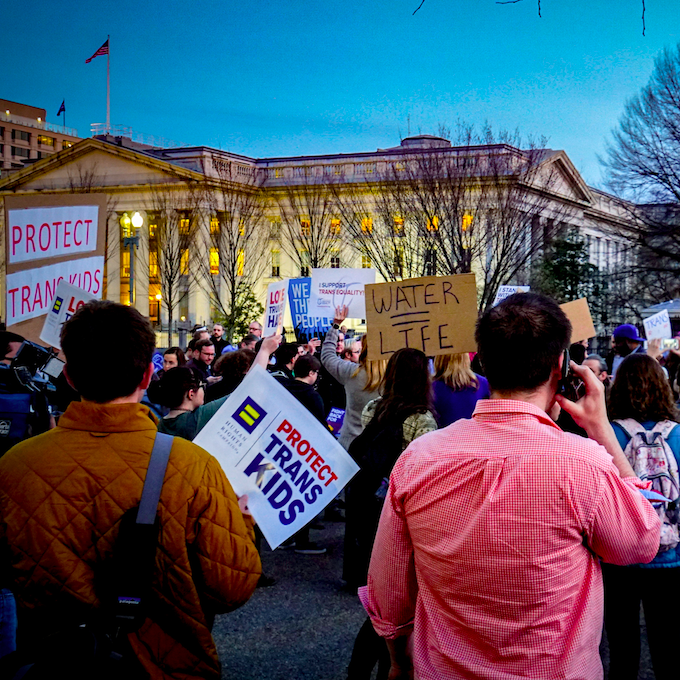
Chief executives, boards of directors and shareholders are increasingly listening to the clarion call for "Brands Taking Stands" - and are hearing the appeals for real change more loudly than ever before.
We’re in one of those rare “hinge” moments in history, when the status quo seems inadequate and failing, and what’s next is emerging out of the meltdown of the current order. The pressure on the top ranks of business management to make more change, faster, is increasing. Companies are being pushed from all quarters—investors, shareholders, employees, and customers—to take stands on the key social issues of the day, on ESG factors, and on employee and community engagement. This surge is being driven by a perfect storm of polarized politics, ominous climate change symptoms, and the collective energy of activists, politicians, innovators, CSR and sustainability practitioners, and a millennial workforce.
The truly exciting development is that chief executives, boards of directors, and shareholders are listening. They are hearing the call for real change more loudly than ever before.
When Money Talks, Public Companies Listen
For public companies, there can be no greater voice to heed than that of the investment community. And that sector is asking for more issue-related data to include in its decision making.
Item: Twelve top banks and tech companies have been queried by activist investor group Arjuna Capital for reports on their median gender pay gap. Adobe, Amazon, American Express, Bank of America, Bank of New York Mellon, Citigroup, Facebook, Google, Intel, JPMorgan, Mastercard, and Wells Fargo make up the select list of those petitioned In January. “Citi became the first U.S. company to respond favorably to the gender pay shareholder proposal...which asks for a report to investors on the percentage global median pay gap between male and female employees across race and ethnicity, including base, bonus and equity compensation,” writes Amy Brown in Triple Pundit. Citigroup revealedthat its median or company-wide gender pay gap is 29 percent. As for the rest of those on the list, “the jury is still out on whether the others will follow Citigroup’s lead,” says Brown. Several firms pointed to past pay equity or diversity figures, reports the Washington Post, while some pushed back on the median figure as “a blunt instrument that doesn’t lend itself to comparability and could lead to misleading figures.” Whatever their response, Citi has set a precedent that the others will need to address.
Investors Push Companies to Adopt ESG Strategies
Item: Recent research from Ceres finds that “ESG investment has doubled over the last three years and now represents $1 of every $4 invested in the United States.” The evidence shows that companies have noticed this targeted interest from the financial market, and many have taken stands on ESG issues. “Among 600 of the largest publicly traded companies in the U.S., nearly two-thirds have commitments to reduce greenhouse gas emissions, half are actively managing water resources and nearly half are actively protecting the human rights of their employees.” The reason is simple and goes straight to the bottom line: “When companies move to integrate and disclose ESG issues into their core business strategies, they end up outperforming their competitors. As a result, the investment market continues to see growth in ESG investing.”
What’s the Message? Nine Answers.
Not all is hunky dory in this picture, though. Ceres research also finds that companies often fail to communicate sustainability as an integral component of business strategy—that is, as a material factor that drives business value. Many companies that are taking positions on ESG issues are communicating them as “nice to do” rather than making the business case for ESG. “Investors want to see companies quantify how investments in sustainability translate into cost savings, market expansion and revenue growth,” says Ceres.
How to bridge this messaging gap? Kirsten Lang, a Ceres Company Network director, has come up with some answers in a report she has authored, Change the Conversation: Redefining How Companies Engage Investors on Sustainability. The paper lays out nine recommendations for companies to improve investor engagement on ESG issues, helping them to not only meet investor expectations, but also to capture competitive advantage. Among them:
- Demonstrate accountability for sustainability
- Cultivate collaboration between sustainability, investor relations, and governance teams
- Disclose sustainability information consistently where investors are already looking
- Leverage the C-suite and board of directors as key messengers
Lang writes, “We must change the conversation that companies have with their investors on sustainability so that companies can be rewarded for their commitments and incentivized to continue to scale their ambition and urgently respond to issues like climate change, water scarcity, and human rights abuses.”
Those who are wondering “what’s next” in a radically transforming business landscape should look closely into this report. It’s a good guide to the shape of the future of business in a disruptive time which shows no signs of settling down.
Previously posted via our Brands Taking Stands newsletter. Be sure to subscribe!
Image credit: Ted Eytan/Flickr
Younger Consumers Warn Facebook: Win Back Our Trust
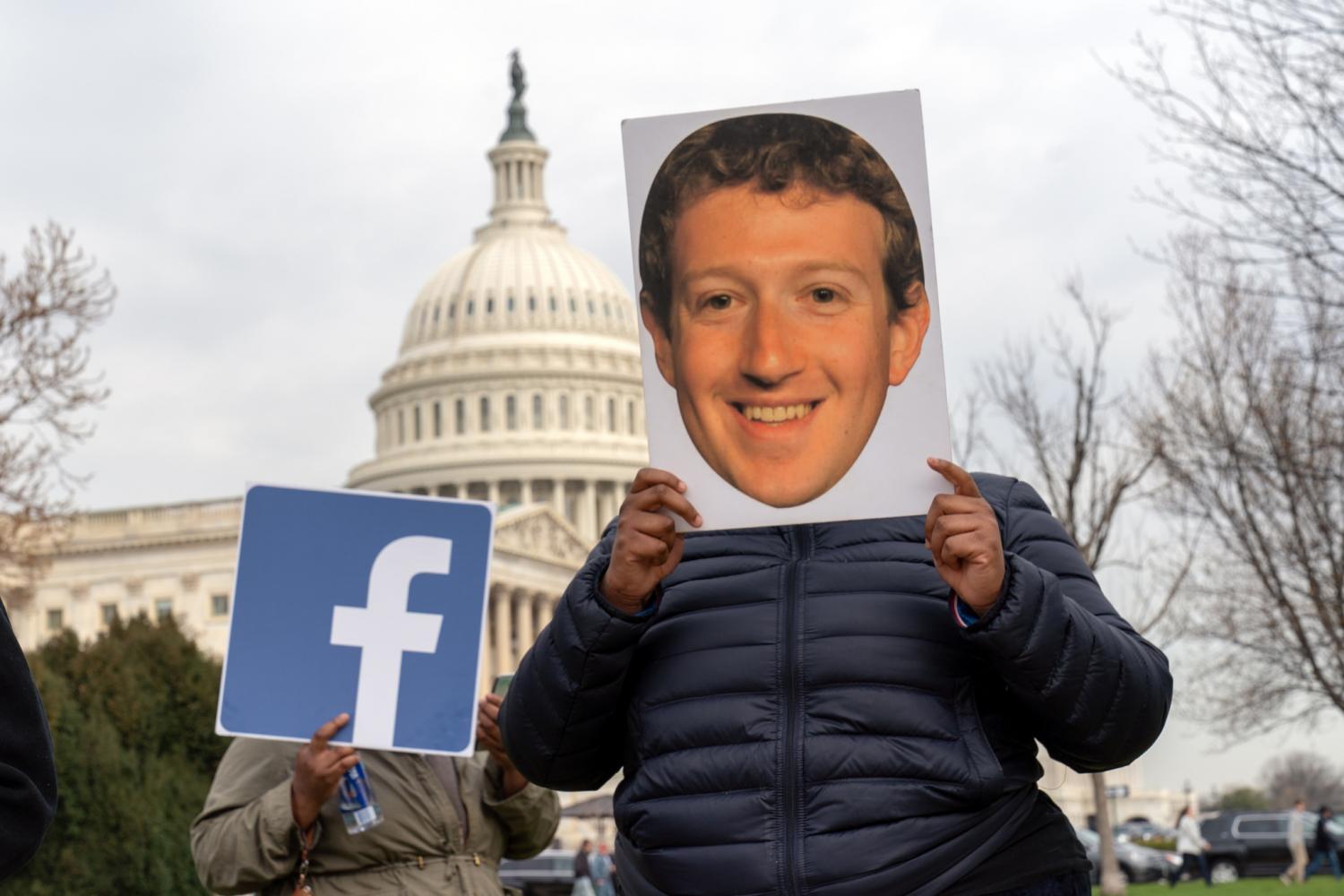
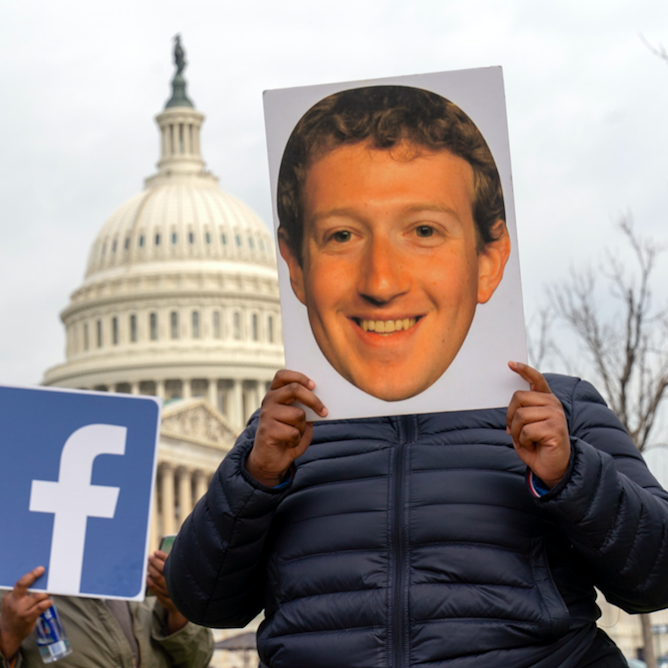
Facebook has actually lost users the past couple years, notably among younger Americans; partly because the company has lost younger consumers' trust.
Currently within the U.S., an estimated 172 million people use Facebook. While that number may first seem impressive, trouble lies ahead for the social network.
According to Edison Research’s latest study, more people are logging off of Facebook for good. The study concluded there are now 15 million fewer Facebook users when compared to Edison’s 2017 report.
Even more concerning: this decline is heavily concentrated among younger Americans. So why are users, particularly younger ones, leaving Facebook?
Facebook lacks what younger users want
Facebook has experienced this decline for a number of reasons. One challenge is that Facebook has not been able to lure younger users away from its competitors. Facebook has struggled to keep up with the popularity of other sites to which younger people are flocking, including Instagram (which Facebook owns), YouTube and Snapchat, despite implementing similar features that make these other sites popular. An example of this would be Facebook’s “story” option, which is very similar to Snapchat’s and Instagram’s stories – popular as they allow users to add filters, music, texts, emojis and other effects.
While Facebook offers private messaging options through Messenger, it has been late adding the features that Generation Z values. These users are more selective of their public personas, choosing to send messages either privately or send disappearing messages over public posts.
One argument made about Facebook’s tenuous popularity is that the platform lacks appeal for some young users as it tries to cater to all ages and demographics, including a younger person’s family members and other demographics.
On that point, Forrester’s Data Consumer Technographics reported that 34 percent of 12- to 17-year-olds in the U.S. think Facebook is for “old people.” Nevertheless, young users do still value Facebook for creating groups and events, which exemplifies the trend of Gen Z users to segment their media platforms for different purposes. They turn to Instagram for products that influencers showcase and YouTube for how-to videos, rather than turn to one site for everything. From these younger users’ point of view, Facebook is no longer a hub for all social media, but rather a tool for gathering and organizing group events.
The real fear for Facebook is concerns over data protection
Even more concerning for Facebook, Gen Z also values data protection and security more than any other generation, and they are more critical of social media platforms and the content they show. While younger online users are more skeptical of social media, they are not necessarily logging off entirely, but instead are moving around to other platforms.
Case in point: Larry Rosin, president of Edison Research, observed in an interview with MarketPlace Tech: “We only show trace numbers of people leaving social media altogether. They're obviously just transferring their usage. The big gainer, interestingly, is under the same roof as Facebook. It's their co-owned Instagram."
This trend of young people moving toward a co-owned app, Instagram, raises a question about the data protection within this social media company. Will people experience a similar breach of their data on other social media platforms? Could the future be platforms that are more focused on data protection?
While there has been a decline in Facebook users because of the company's struggle to compete with emerging social media platforms, Facebook has also blundered when it comes to perceptions about its trustworthiness. Trust between a company and its consumers helps continue usage, and other benefits include a positive brand perception.
Trustworthiness must be demonstrated through time. It will take time for Facebook to rebuild its credibility, especially with the ongoing critiques of Facebook’s “fake news” epidemic and the lack of regulations over continuing problems like hate speech.
While websites that offer free services to users must generate revenue through advertising and other models, the practice of creating revenue from personal information has been met with criticism about breaches of security and lack of transparency. Facebook’s problems with some of its advertisers have breached the trust of many users, especially younger audiences, who were already shying away from Facebook over its overall lack of appeal.
The Cambridge Analytica scandal is one of many instances that sparked outrage among users, causing many to delete their Facebook accounts. TriplePundit originally covered last April whether a Facebook boycott could push the company to transform its data privacy and protection tactics. Will a loss of 15 million users have enough effect?
The news is not all bad for Facebook. Although U.S. users, particularly younger ones, are accessing Facebook less and are even sometimes deleting their accounts altogether, the platform is still gaining users from other demographics. So is this Facebook exodus relevant when compared to Facebook’s growing number of users?
While young American users are leaving Facebook at a steady pace, older users are still opening and using their accounts, and overall, Facebook is increasing in popularity around the globe. These new users may not be the market for which advertisers are currently aiming, but this is still a large consumer base—opening the door for more opportunities, and more challenges down the road as well.
Image credit: Lorie Shaull/Flickr
Businesses Must Speed Up the Race to Take on Climate Change


For the first time in six years, the Republican-held Senate held a committee hearing on climate change; one senator in particular offered lessons for why businesses need to speed up the race to take on such risks.
The political divide over climate change falls neatly into two categories: Republican office holders in the U.S. Congress consistently reject federal policies aimed at cutting greenhouse gas emissions, while Democratic office holders advocate for ways in which to minimize climate change risks. However, this conventional wisdom may soon change.
Last week, the Republican-held Senate held a committee hearing on climate change for the first time in six years. As significant as the event was, though, it sailed almost completely under the media radar.
Nevertheless, the hearing provided a roadmap for businesses that seek to make the case for climate action with Republican office holders.
A roadmap for a bipartisan climate change conversation
The partisan divide is already breaking down over clean power, as the cost benefits of renewable energy become more visible in daily life.
Similarly, the impacts of climate change are no longer a nebulous concern of some future generation. They are piling up here and now. The costs for companies are starting to pile up as well.
And that conversation is starting. Republican Senator Lisa Murkowski of Alaska convened an Energy and Natural Resources Committee Hearing, under the title, “Oversight Hearing to Examine the Electricity Sector in a Changing Climate.”
Senator Murkowski’s opening statement provided the blueprint for bridging the partisan divide.
First, she made it clear that advocates for climate action do not need to provide any more grist for the climate denial mill. In her first paragraph, she noted that the purpose of Tuesday’s hearing was to provide more detail on the “effect that climate change is having on decisions within the electricity sector,” not to convince deniers that climate change is happening.
To hammer home the point, she listed a series of here-and-now impacts that are affecting daily life in her state:
“It is directly impacting our way of life. Diminishing sea ice and melting permafrost are real world challenges that we must contend with today. We’re seeing wildlife migration patterns that are changing, we’re seeing changes within our fisheries as we’re seeing different species in northern waters than we have before. It’s impacting subsistence, it’s impacting food security, certainly impacting our economy with our fisheries.”
The economic impacts of climate change cross party lines
Second, and most importantly, Senator Murkowski emphasized the direct impacts of climate change on one critical sector of the Alaskan economy, its fisheries. She drew particular attention to the ability of fry (young fish, including the famous Alaska salmon, that have just developed the capacity to feed themselves) to survive in hatcheries in recent years. These fish have been pushed farther out to sea by climate change-linked drought. She took note of a recent news article headlined, “Hatcheries are the Canary in the Coal Mine as Drought Extends across Southeast Waters.”
The Alaska Public Radio story discussed how after several years of declining rainfall patterns, lakes and reservoirs in America’s largest state have not been able to replenish historic water levels. The impacts are now wreaking havoc on the Alaskans who rely on fishing for a living.
In a related comment, Murkowski talked about community-wide economic impacts. The ongoing drought in Southeastern Alaska has forced some communities to switch from low-cost, low-carbon hydropower to expensive and emissions-emitting diesel fuel for electricity generation.
Climate change and the voting public
Finally, Murkowski linked climate change to a drop in the quality of life that have changed the lives of thousands of people – as in, voters – across her state. She described how the ongoing drought in Southeastern Alaska is stressing water resources in communities that have long been accustomed to living under rainforest conditions.
She also pointed to extreme cases in which some communities need to relocate “in order to survive the encroaching seas.”
Finally, in an emotional appeal, Murkowski linked climate change to the loss of traditions and state identity. Without spelling it out in so many words, she also drew a connection to tourism and the looming economic disaster that would occur when popular destinations and events eventually fall to climate impacts.
Specifically, she cited changes to Alaska’s iconic Iditorod dog sled race:
“In the Norton Sound area, where the teams will usually cross the frozen ocean, it makes for a very exciting but grueling trek because of the winds that are out there; well now that is open water, they have had to reroute the race to hug the shoreline.”
Speaking of dog sled races, such testimony serves as a sign to the business community that they are in a dogfight against time. The cost of lost fisheries, price of relocated communities as well as the loss of real estate due to rising sea levels will be insurmountable in the long run if they are not addressed now.
Senator Murkowski has provided the business community another opportunity to make the economic argument for climate change. It is up to these leaders to amplify their voices, if the Republican Senate will ever listen.
Image credit: Frostnip907/Flickr